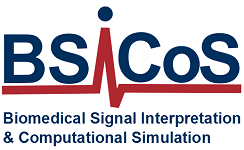-
Projects
Diabetic heart on chip for multiscale characterization of the ventricular remodeling in diabetic cardiomyopathy – DHOC
Start date
2023
End date
2024
Coordinator
Aida Oliván
Funding agency
CIBER-BBN
Diabetic cardiomyopathy is a pathology that affects millions of people worldwide, yet it currently lacks effective treatments, in part because its clinical manifestations are not yet fully understood, and the mechanisms underlying disease progression are unclear. It is therefore crucial to develop a better understanding of the molecular and cellular basis of the pathophysiological phenotypes and disease progression using clinically relevant disease models. Approaches so far carried out by other studies have tended to consider the different contributors to DCM separately, potentially leading to inconclusive or even contradictory results.
This project aims to provide new knowledge of the molecular and cellular mechanisms that cause pathological ventricular remodeling in diabetic patients through the development of novel in vitro methodologies.
From the clinical point of view, our results will improve the current understanding of diabetic cardiomyopathy, through a broad characterization of the pathomechanisms that drive the cardiac remodeling associated with diabetes mellitus. The incorporation of this large volume of experimental data into computational models may facilitate the identification and study of complex interactions and mechanisms, and improve the prediction of arrhythmic risk in diabetic patients. Since this is a highly prevalent disease, affecting millions of people worldwide, the socio-economic impact on our society is expected to be very high.
In terms of technological development, the project will provide a diabetic heart on chip (DHOC), and an optimized platform for biomimetic culture of cardiac cells, with implementation of a sensor to monitor electromechanical stretch and culture environment. This platform has a great potential for translational scientific research by the generation of representative and useful cardiac disease models and also as a platform for drug testing and cardiotoxicity assessment. Therefore, they have a huge potential to be transferred to hospitals, companies, pharmaceutical industry and regulatory agencies.
